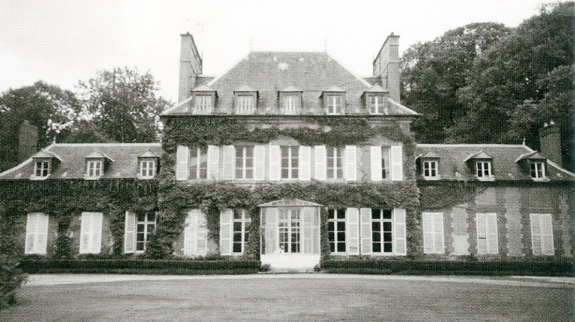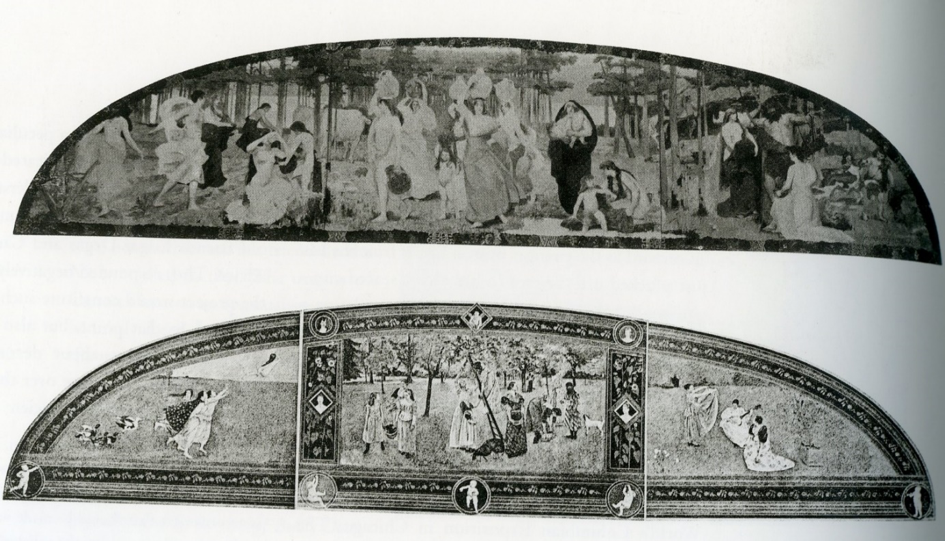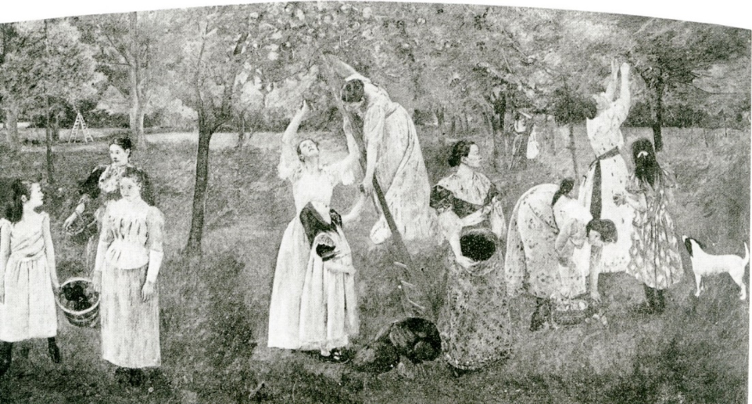The Château de Bachivillers
|
The estate was put on the market after World War One and now belongs to the Dornès family. The château is a pleasant, well-proportioned manor house of red brick with grey stone trim. A central three-story block has two story wings on each side. |
|
During her last summer in Bachivillers in 1893, she received an unexpected commission for the Women’s Pavilion at the Chicago World's Fair She was asked to paint a monumental allegory to the glory of Modern Women. Mary Fairchild MacMonnies was to paint a facing mural on Primitive Woman. After some hesitation due to the scale of the commission, she accepted and had a deep trench dug in the château’s greenhouse, which had been converted into a studio, to avoid having to paint from the top of a ladder. A pulley system was installed to handle the triptych. The task was immense, and she enlisted an assistant for the decorative borders and a canvas expert to address technical issues related to the support and frame. She completed the work on time in six months. Mary had received little precise guidance on the proposed theme and chose a pastoral scene depicting women and girls in an orchard picking fruit, symbols of knowledge and wisdom. |




